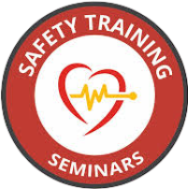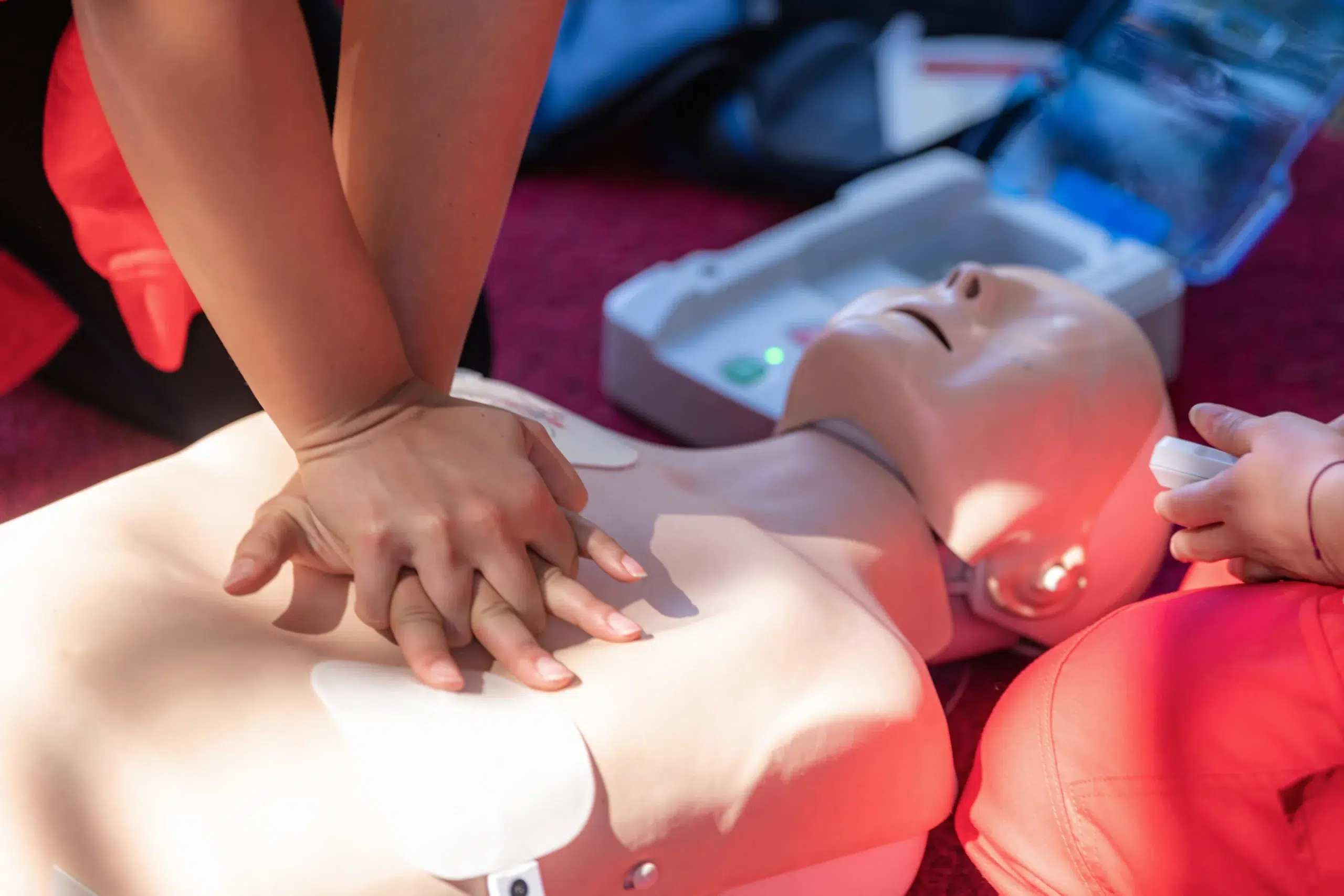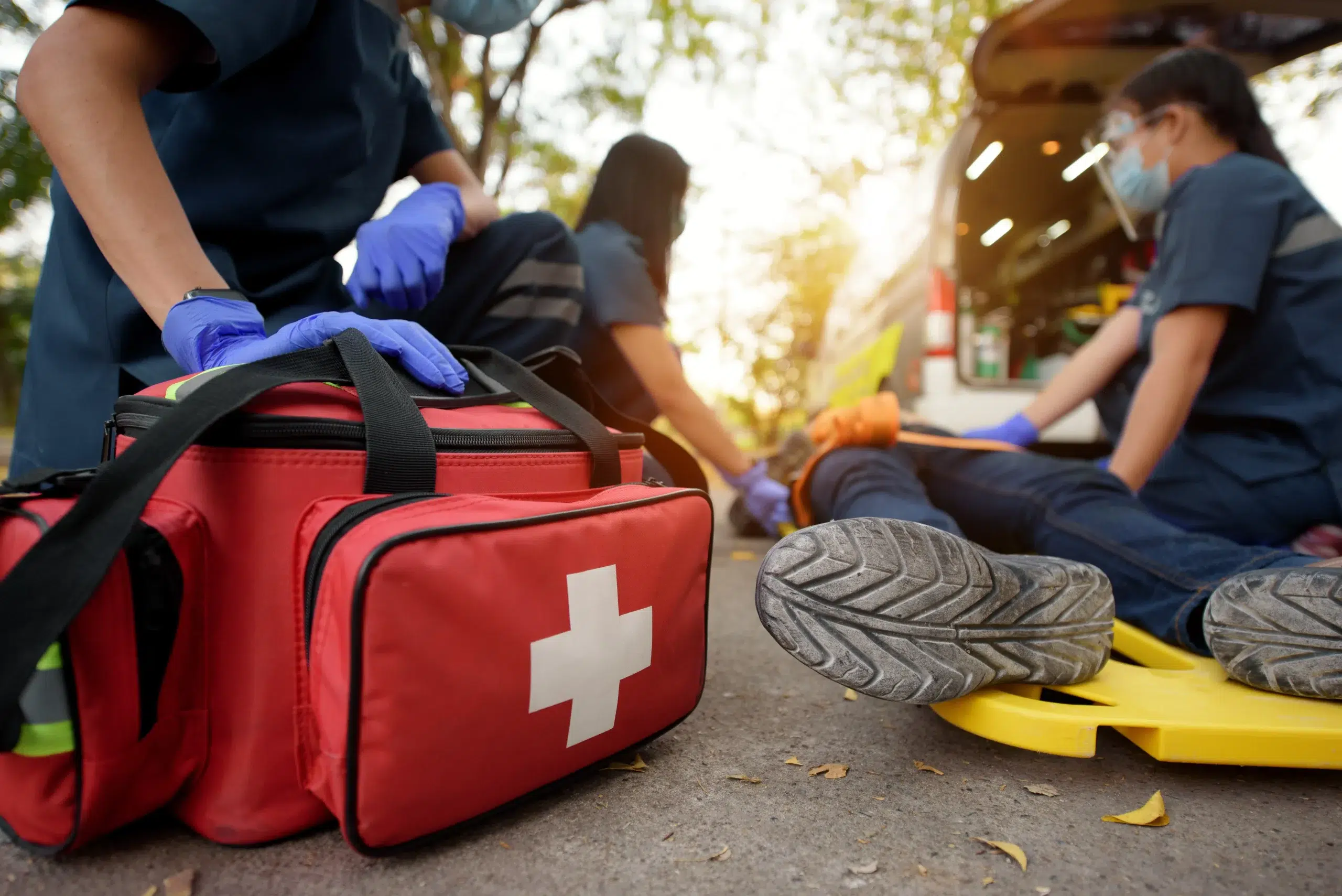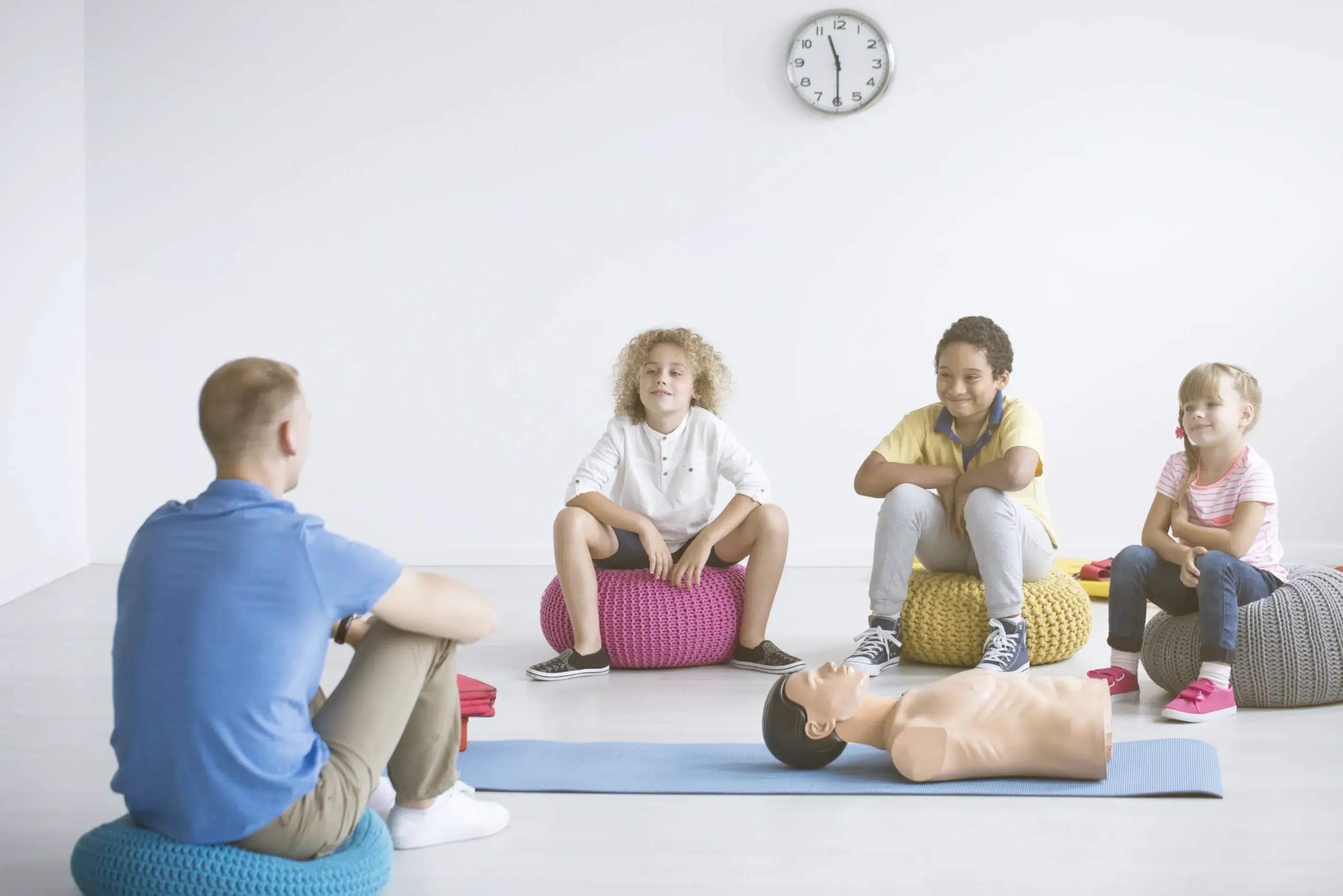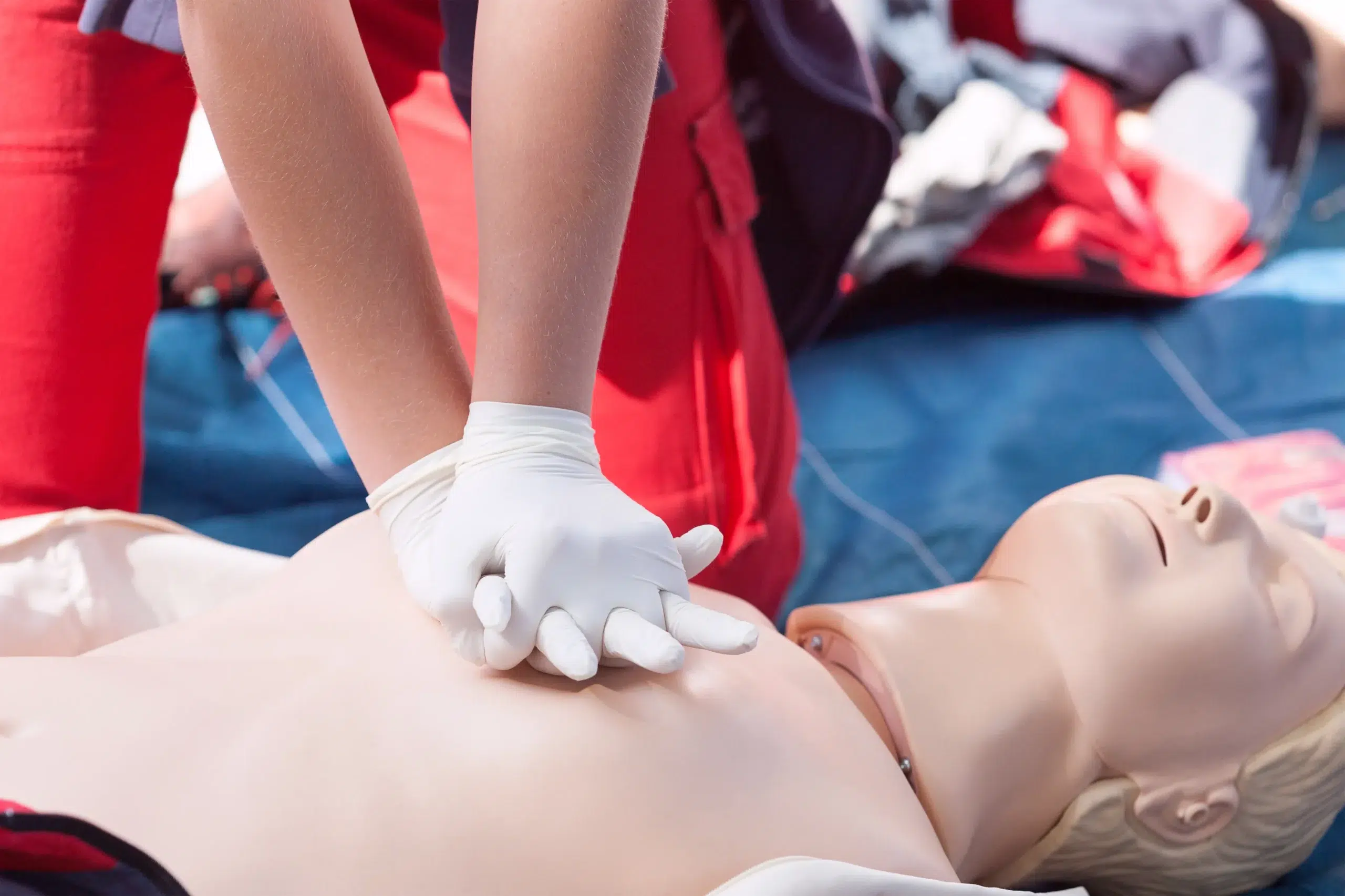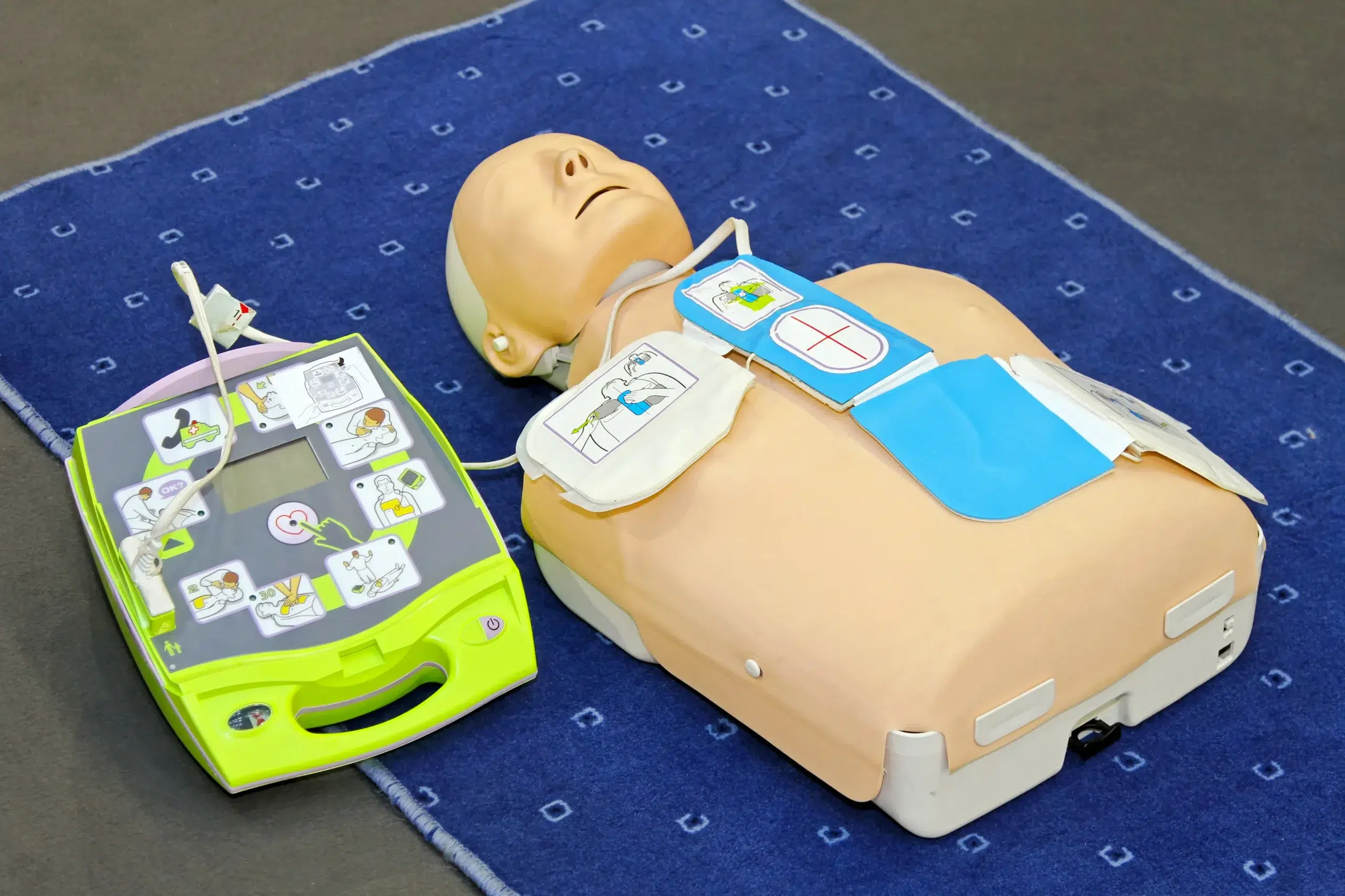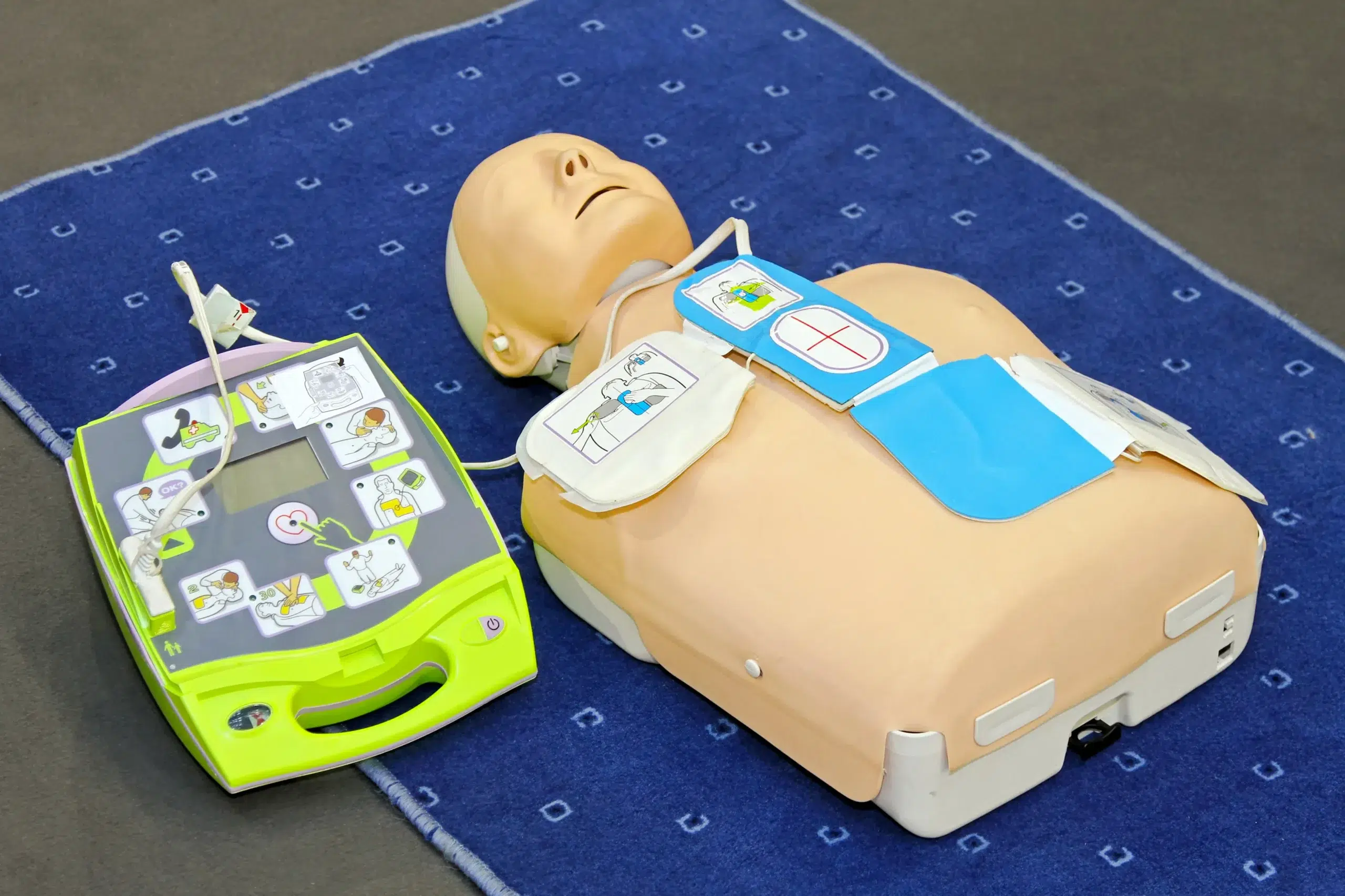Medical emergencies can happen anytime, anywhere. Being equipped with the skills to respond effectively can be life-saving. This guide provides a comprehensive overview of AHA BLS certification, from understanding its importance to finding AHA BLS courses nearby. We’ll explore the key skills you’ll learn, discuss the benefits of certification, and walk you through the process of finding the right course and provider for your needs. We’ll also cover costs, different learning formats, what to expect during training, and how to prepare for your course. Let’s equip you with the knowledge and skills to make a difference in a critical situation.
Key Takeaways
- BLS certification empowers you to handle medical emergencies. Learn life-saving skills like CPR and AED use through a reputable provider like Oakland CPR Courses. They offer various course formats to fit your schedule and learning preferences.
- Finding the right BLS course involves considering several factors. Think about instructor qualifications, course format (in-person, blended, or online), and convenience. Check reviews and compare pricing, including discounts for groups. Oakland CPR Courses offers competitive rates and a low-price guarantee.
- Prepare for your course by completing any pre-course work and understanding the two-year certification validity. Hands-on practice is crucial for mastering BLS skills, so choose a provider that emphasizes this aspect. Oakland CPR Courses prioritizes hands-on training and provides a supportive learning environment.
What is AHA BLS? Why is it Important?
Learning BLS can empower you to confidently respond to medical emergencies and potentially save lives. This section covers the essentials of AHA BLS, its importance, and why you should consider getting certified.
Definition and Purpose
Basic Life Support (BLS) provides the foundational knowledge and skills necessary to respond to cardiopulmonary emergencies. It focuses on providing immediate care to victims until advanced medical personnel arrive. BLS certification from the American Heart Association (AHA) is a widely recognized credential, ensuring you receive high-quality training based on the latest scientific guidelines. The training covers essential techniques for adults, children, and infants, equipping you to handle various emergency situations.
Key Skills
AHA BLS courses teach core skills, including high-quality CPR for all age groups (adults, children, and infants), the proper use of an automated external defibrillator (AED), effective ventilation techniques, and how to manage choking situations. These skills are crucial for responding effectively to respiratory and cardiac arrest, significantly increasing the chances of survival.
Life-Saving Potential
Knowing BLS can make a profound difference in a medical crisis. It equips you with the skills to provide immediate assistance, potentially bridging the gap between the onset of an emergency and the arrival of professional medical help. This timely intervention can be crucial in preserving life and minimizing long-term health consequences. Whether you’re a healthcare professional or a concerned citizen, BLS training empowers you to act decisively and confidently in critical situations.
Professional Requirements
BLS certification is often a prerequisite for many healthcare professions. It signifies a commitment to patient safety and demonstrates competency in essential life-saving procedures. The AHA’s reputation as a trusted and respected organization adds further weight to the certification, ensuring employers and colleagues recognize your qualifications and dedication to providing high-quality care. Even if not strictly required for your job, BLS certification can enhance your professional profile and open up new career opportunities.
Find AHA BLS Courses Near You
Finding the right Basic Life Support (BLS) course shouldn’t be a headache. Whether you’re a healthcare provider, a student, or someone who simply wants to be prepared for emergencies, several convenient options exist for finding American Heart Association (AHA) BLS courses near you.
Use the AHA’s “Find a Class” Tool
The AHA website offers a handy “Find a Class” tool that lets you search for BLS courses by location. This is a great starting point, as it ensures the training you select meets the AHA’s standards. Keep in mind, passing an AHA BLS course involves scoring at least 84% on the written exam and successfully demonstrating your skills in the practical test.
Local Training Centers and Organizations
Many local training centers and organizations offer AHA-certified BLS courses. AHA certification is widely recognized and provides standardized, up-to-date training. Check with hospitals, community centers, and dedicated CPR training facilities in your area. Safety Training Seminars is one example of a local provider offering these valuable courses. This localized approach often makes it easier to find a class that fits your schedule and learning preferences.
Oakland CPR Courses
For those in and around Alameda, Oakland, and Berkeley, Oakland CPR Courses offers convenient, high-quality AHA BLS training. With their experienced instructors, small class sizes, and same-day certification, you can quickly gain the skills and credentials you need. Their competitive pricing, commitment to excellent customer service, discount group class options, and low price guarantee make them a smart choice.
Choose Your Course Format: In-Person, Online, or Hybrid
Finding the right AHA BLS course format is key to successful learning. Think about your learning style and schedule as you explore these options: traditional classroom learning, online self-paced modules, and blended learning, which combines both. No matter which format you choose, a hands-on skills assessment is crucial for certification.
Traditional Classroom Learning
Many students thrive in a traditional classroom setting. In-person courses offer structured learning with a certified instructor who guides you through the material, answers questions, and provides real-time feedback. This format fosters interaction with peers, allowing for collaborative learning and practice. For those in the Oakland area, in-person training is readily available.
Online Self-Paced Modules
If you prefer flexibility, online self-paced modules might be a good fit. You can study the material at your own speed, revisiting sections as needed. This format is ideal for those with busy schedules or who prefer independent learning. The American Heart Association RQI program is a popular online option for healthcare professionals seeking BLS certification.
Blended Learning
Blended learning combines the best of both worlds. You’ll complete online modules at your own pace, then attend an in-person skills session to practice and demonstrate your skills. This approach offers flexibility while ensuring you receive the hands-on training necessary for effective BLS. This blended format is a convenient option for many.
Hands-On Skills Assessment
Regardless of your chosen format, all AHA BLS courses include a hands-on skills assessment. This crucial component allows you to demonstrate your proficiency in performing CPR, using an AED, and providing other life-saving techniques. A certified instructor will evaluate your performance, ensuring you meet the AHA’s standards for BLS certification. You’ll find providers in Oakland offering these essential in-person skills sessions.
What to Expect in an AHA BLS Course
So, you’ve signed up for an AHA BLS course—congratulations! Knowing what to expect can help you feel prepared and confident on training day. Here’s a breakdown of what awaits you:
Course Duration and Curriculum
AHA BLS courses are comprehensive and designed to equip you with the skills to respond effectively in a cardiac or respiratory emergency. A typical BLS course for initial certification takes about 4.5 hours. Renewal courses are generally shorter, clocking in around 3 hours. Remember that your BLS certification is valid for two years. The curriculum covers essential life-saving techniques, including high-quality CPR for adults, children, and infants; the AHA Chain of Survival; and effective ventilation techniques. You’ll also learn how to recognize and respond to life-threatening emergencies like heart attacks and strokes. The course emphasizes early recognition and intervention, including using an AED.
Hands-On Practice and Skills Assessment
AHA BLS courses aren’t just about lectures and textbooks. Hands-on practice is a core component of the training. Expect to participate in simulated clinical scenarios and work at various learning stations to reinforce your skills. You’ll practice on manikins, allowing you to get comfortable performing CPR and other essential techniques in a safe and controlled environment. A certified AHA BLS instructor will guide you through the practice sessions and skills testing, ensuring you’re proficient before moving on.
Written Exam and Certification
Once you’ve completed the hands-on training, you’ll take a written exam to assess your understanding of the BLS principles and procedures. You’ll need to score at least 84% to pass. In addition to the written exam, you’ll also complete a skills assessment to demonstrate your proficiency in performing the techniques you’ve learned. Successfully completing both the written and skills components is required to earn your AHA BLS certification. This thorough evaluation process ensures you’re well-prepared to handle real-life emergencies.
AHA BLS Course Costs
When considering BLS certification, it’s helpful to understand the typical costs involved. This section breaks down average prices, potential discounts, and what Oakland CPR Courses offers.
Average Price Range and Additional Fees
BLS course fees can fluctuate based on location, course format (in-person vs. online components), and the training provider. Generally, you can expect to pay somewhere between $60 and $90 for a BLS certification course. CPR Certification Oakland, for instance, offers an AHA-certified CPR class for $64.95, with their First Aid + CPR class priced at $84.95. Some providers might have additional fees for study materials or certification card processing, so always confirm the total cost before you register.
Discounts and Promotions
It’s always a good idea to check for discounts. Many training centers offer lower rates for group registrations, students, or returning customers renewing their certifications. Many CPR training providers, including Bay Area CPR, offer renewal courses covering the same core material as the initial certification, ensuring you’re up-to-date with the latest guidelines. These renewal courses are sometimes available at a slightly reduced price. Just ask about potential discounts when you contact a provider.
Oakland CPR Courses Pricing and Guarantee
Oakland CPR Courses is committed to providing accessible, high-quality training. We focus on competitive pricing, expert instructors, small class sizes, and same-day certification, making BLS training convenient and affordable. Our certified training center, Safety Training Seminars, offers AHA-accredited CPR and First Aid classes, including BLS certification courses, available daily. We also offer a low-price guarantee and discounts for group classes to make getting trained even easier.
Choose the Right AHA BLS Provider
Picking the right Basic Life Support (BLS) provider is key to a great learning experience. Here’s what to consider:
Instructor Qualifications and Facility Quality
First, check the instructors’ credentials. Are they certified by the American Heart Association (AHA)? A solid training center, like Safety Training Seminars, is an AHA Training Center offering various courses like BLS, ACLS, PALS, CPR, and First-aid in Oakland, CA. This ensures you’re learning from qualified experts. Also, consider the training facility. Is it clean, well-equipped, and conducive to learning?
Customer Reviews and Testimonials
Next, see what other students say. Online reviews offer valuable insights into a provider’s training. Look for providers with consistently high ratings and positive feedback, like the excellent reviews for CPR Certification Oakland. Testimonials can give you a good sense of what to expect.
Scheduling and Convenience
Finally, think about logistics. Does the provider offer classes that fit your schedule? Oakland CPR Courses is known for its flexible scheduling, small class sizes, and same-day certification. Convenient options, like weekend or evening classes, can make a big difference. Competitive pricing and any available discounts are also worth considering.
Prepare for Your AHA BLS Course
Getting ready for your AHA BLS course involves a little prep work—both with materials and mindset. Knowing what to expect and how to prepare can make your learning experience smoother and more effective.
Pre-Course Materials and What to Bring
Many providers, including Oakland CPR Courses, use a blended learning format. This means you’ll complete an online portion at your own pace before attending a shorter, in-person skills session. Check with your chosen provider to see if they offer this HeartCode BLS blended learning option. If so, make sure you finish the online modules before your in-person skills session. For the in-person portion, wear comfortable clothing, as you’ll be practicing skills like chest compressions and rescue breaths. Bring a notebook and pen to jot down notes, though most courses provide materials. And don’t forget a water bottle to stay hydrated!
Mental Preparation and Study Tips
While BLS certification focuses on practical skills, understanding the underlying principles is key to confident performance. Oakland CPR Courses emphasizes student success with high-quality instruction and expert instructors, so rest assured you’re in good hands. Review any pre-course materials provided and familiarize yourself with basic medical terminology. Don’t stress about memorizing everything—the course is designed to teach you what you need to know. The goal is to learn the skills and gain the confidence to respond effectively in an emergency. Come prepared to actively participate, ask questions, and practice. Small class sizes at Oakland CPR Courses create a supportive learning environment, so take advantage of the opportunity to interact with the instructor and your fellow students.
AHA BLS Certification and Renewal
Certification Process and Validity
The American Heart Association (AHA) Basic Life Support (BLS) course equips participants with the skills to respond to cardiac emergencies. The initial BLS certification course takes about 4.5 hours and includes a written exam and a skills test. An 84% score or higher is required to pass. Your BLS certification is valid for two years, after which you’ll need to renew it. AHA certification is nationally recognized, offering standardized training in various life support techniques, from basic CPR to advanced life support. This standardization gives employers confidence in the quality of their employees’ training.
Renewal Requirements and Options
Renewing your BLS certification is essential to stay current with the latest guidelines and best practices. Many training providers, including Oakland CPR Courses, offer renewal courses that cover the same core material as the initial certification. These renewal courses are typically shorter, around three hours, offering a quick way to refresh your skills and knowledge. If your BLS Healthcare Provider certificate is close to expiring, several local providers can help you renew, ensuring you remain certified and prepared for emergencies. Safety Training Seminars offers various courses and schedules to fit your needs.
Local AHA BLS Course Providers
Finding the right Basic Life Support (BLS) course provider is key to receiving quality training and earning your certification. Here are a few options for AHA BLS certification in the Oakland area:
Oakland CPR Courses
Oakland CPR Courses prioritizes accessible, high-quality training. Experienced instructors lead small classes, ensuring personalized attention and effective learning. They offer same-day certification and competitive pricing, making them a convenient and affordable choice. Check out their CPR certification page for more details.
Safety Training Seminars
Safety Training Seminars provides AHA-accredited CPR and First Aid classes, including BLS certification courses. With daily classes available in over 60 cities, they offer widespread accessibility and focus on high-quality instruction at competitive prices. Explore their course catalog to find a class that fits your needs.
Bay Area CPR
Bay Area CPR offers various BLS training options, including the convenient HeartCode BLS blended learning program. This format allows students to complete the online portion at their own pace before attending a shorter, in-person skills session. For those who prefer a more traditional approach, they also offer classroom-based BLS courses.
San Pablo CPR Classes
San Pablo CPR Classes is another option for AHA-certified BLS training. They offer both online and in-person courses, providing flexibility for different learning styles and schedules. As an AHA Certified Training Site, they meet the Association’s rigorous standards for quality instruction. Learn more about their BLS course offerings.
Common AHA BLS Misconceptions
It’s easy to get confused by information online, especially about certifications. Let’s clear up some common misconceptions about AHA BLS courses.
Online-Only Certification Myth
One common misconception is that you can get fully certified in BLS online. While online courses offer flexibility for the cognitive portion of learning BLS, the American Heart Association requires a hands-on skills assessment with an AHA BLS Instructor. Be wary of programs claiming to offer 100% online BLS certification—they likely don’t meet the AHA’s standards. A blended learning approach, combining online coursework with in-person skills practice, offers the best of both worlds.
Course Difficulty and Passing Requirements
Some people worry about the BLS course being too difficult. The good news is that most courses are designed to help you succeed. To pass, you’ll need to score at least 84% on the written exam and demonstrate your skills in person. This two-part approach ensures you understand the material and can perform BLS in a real-life scenario. If you’re looking for more information, this article offers helpful advice on obtaining a BLS certification.
Importance of Hands-On Practice
Especially if you’re new to BLS, in-person training is invaluable. It gives you a chance to practice on mannequins, ask an instructor questions, and get real-time feedback. This interactive environment builds confidence and helps you master the techniques. For those considering online-only options, this discussion on BLS certification highlights the importance of hands-on learning.
Related Articles
- BLS Certification in Oakland: The Ultimate Guide – Oakland CPR Classes
- Find the Right BLS Class in Oakland: Your Guide – Oakland CPR Classes
- BLS Training Near Me: Your Complete Guide – Oakland CPR Classes
- BLS Certification Near Me: A Complete Guide – Oakland CPR Classes
- AHA BLS Renewal Near Me: A Practical Guide – Oakland CPR Classes
Frequently Asked Questions
How long does it take to get BLS certified? An initial BLS certification course typically takes about 4.5 hours to complete, while renewal courses are generally shorter, around 3 hours. This includes both the classroom instruction and the hands-on skills assessment.
What’s the difference between online, in-person, and blended learning for BLS? Online BLS courses offer flexibility for learning the material at your own pace, but they don’t fulfill the hands-on skills assessment requirement. In-person classes provide a structured learning environment with direct instructor interaction. Blended learning combines online modules with an in-person skills session, offering both flexibility and hands-on training.
How much does a BLS course cost? BLS course costs typically range from $60 to $90, depending on the location, format, and training provider. Look for potential discounts for group registrations, students, or returning customers. Always confirm the total cost, including any additional fees for materials or certification card processing, before registering.
How long is my BLS certification valid, and how do I renew it? BLS certification is valid for two years. Renewal courses are available and usually shorter than the initial certification course. They cover the same core material and ensure you’re up-to-date with the latest guidelines.
What if I don’t pass the BLS course the first time? Don’t worry if you don’t pass the first time. Most providers offer opportunities to retake the course or specific components, like the written exam or skills test. Talk to your instructor or training center about their retake policy and any associated fees.
